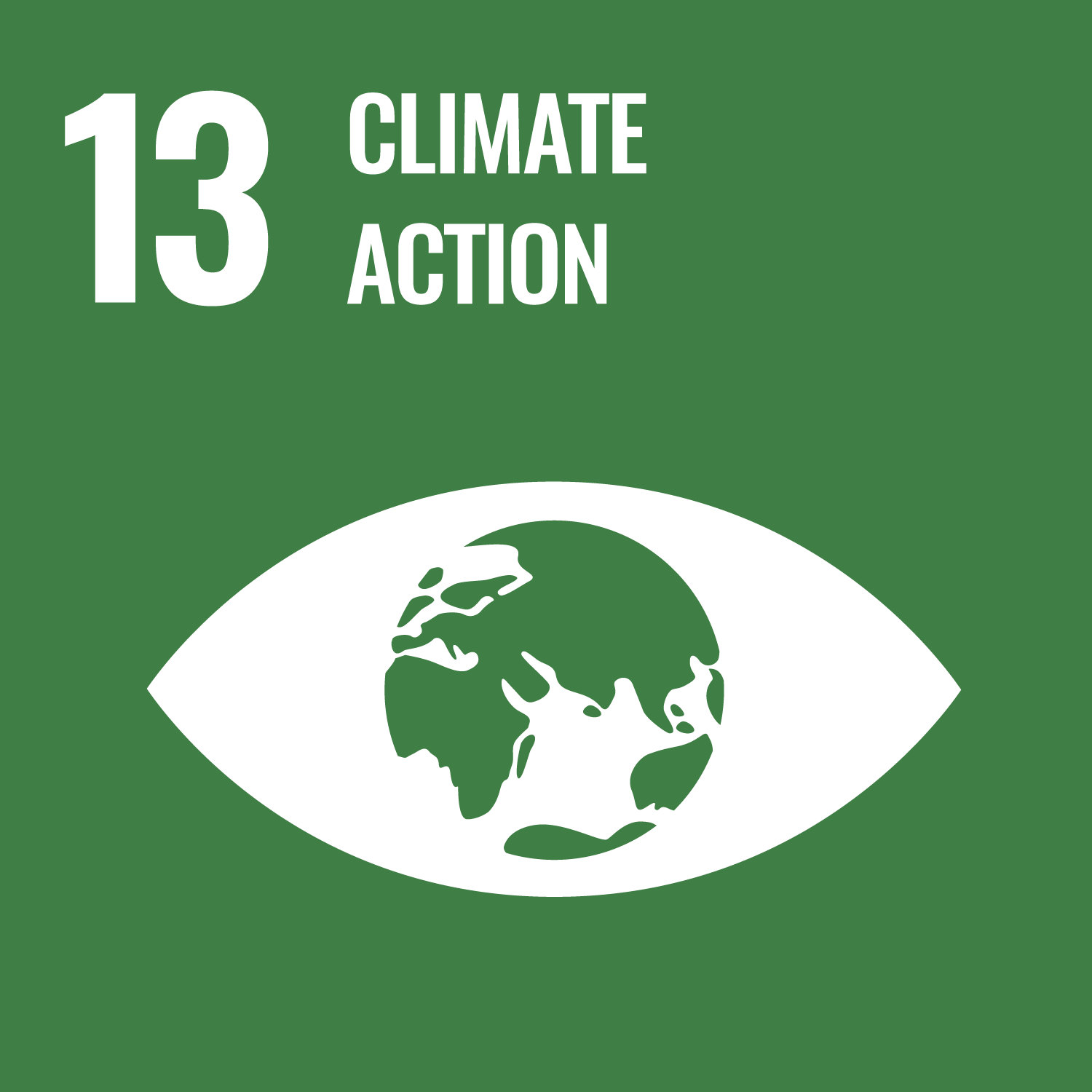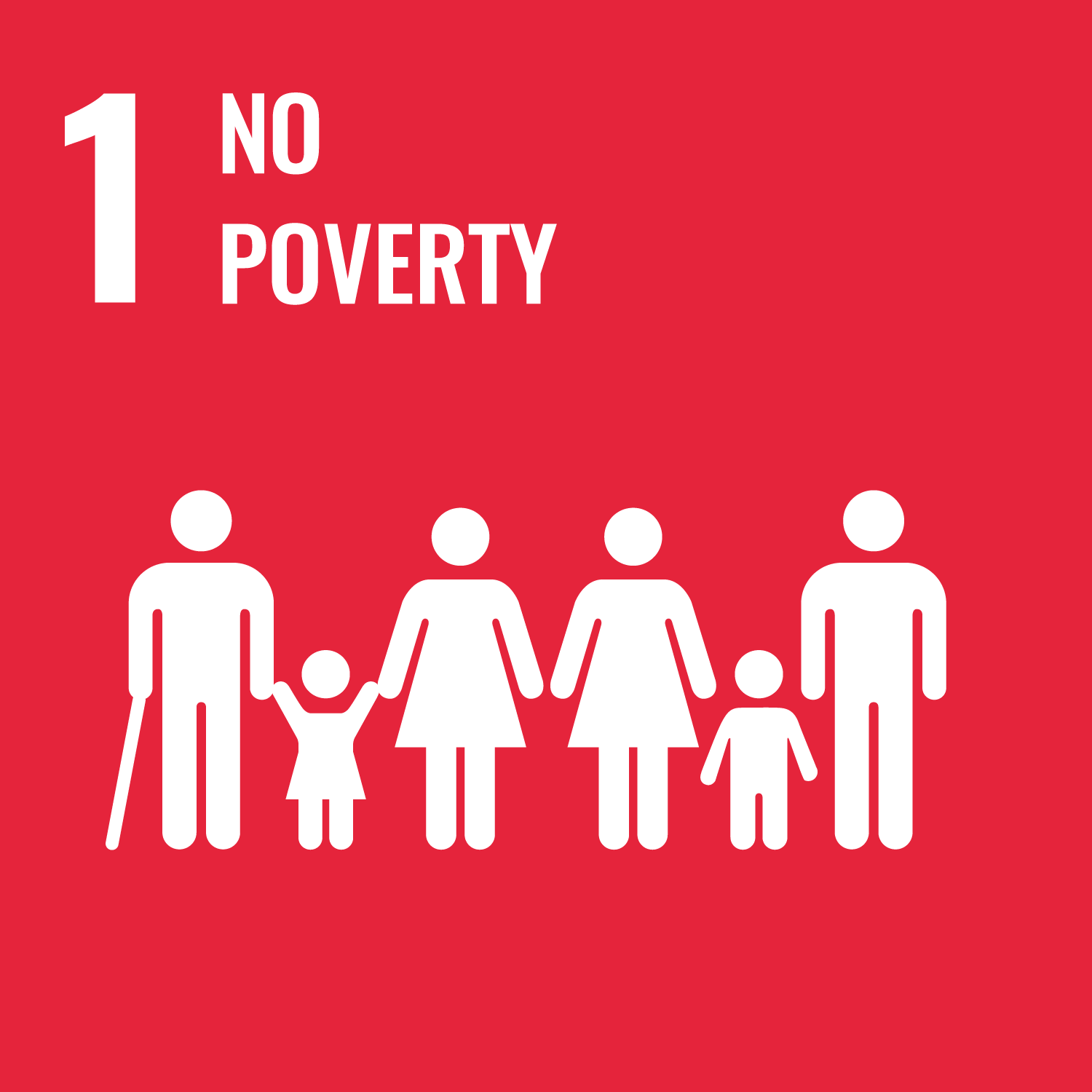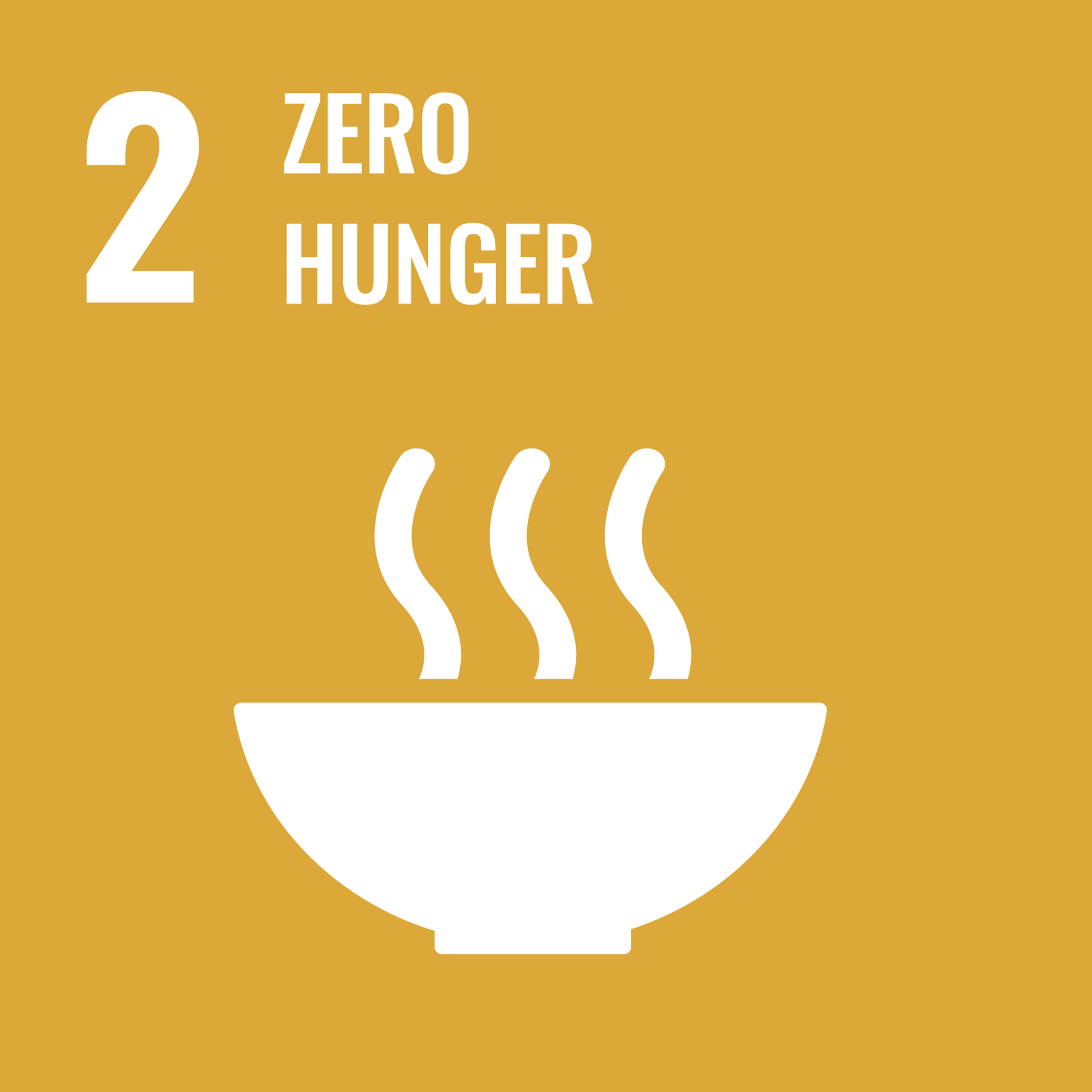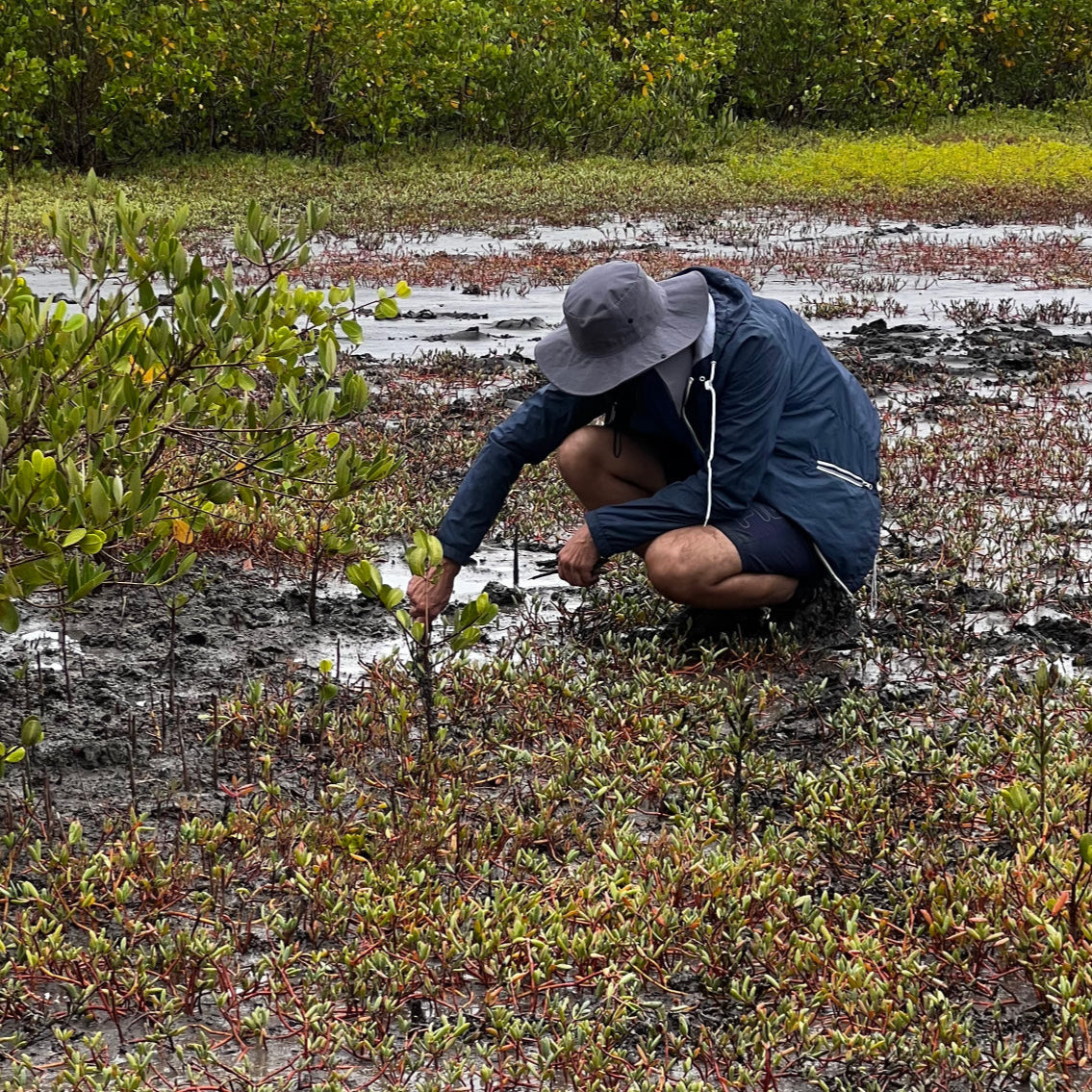
Restoring Amazon's Mangroves in Brazil
Mangrove restoration in Maranhão, Brazil, protects coastlines, restores habitats, and supports local communities. This project combats deforestation, promotes sustainability, and ensures lasting environmental and social benefits.
Species planted
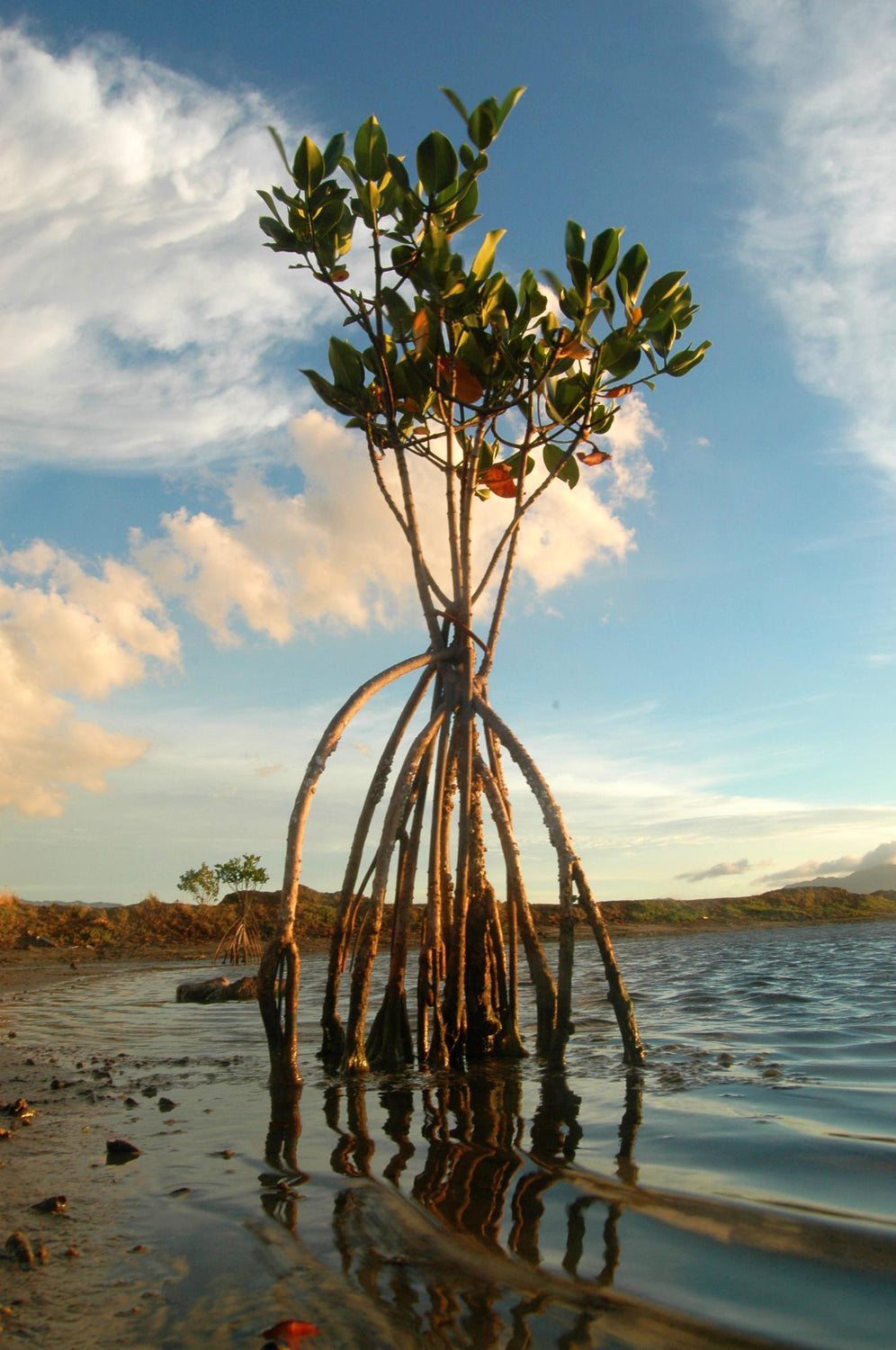
Mangrove
Project Impact
This mangrove restoration project provides significant social and environmental benefits by improving the livelihoods of local fishermen, creating jobs in a region with limited employment opportunities, and restoring critical habitats for endangered species. By rehabilitating some of the world’s most carbon-rich forests, the project plays a vital role in climate change mitigation, helping to capture and store vast amounts of carbon dioxide. Additionally, the restoration of mangrove ecosystems leads to improved fish stocks, directly benefiting the local fishing community that depends on these waters for their income and food security. Beyond fishing, the project also aims to introduce ecotourism initiatives in collaboration with partners, offering sustainable economic opportunities that will support the region in the long term.
The restoration efforts also focus on replanting three key mangrove species: Laguncularia racemosa (White Mangrove), Rhizophora mangle (Red Mangrove), and Avicennia germinans (Black Mangrove), which are vital to the health of coastal and riverine environments. These species were chosen because they each play a unique role in maintaining coastal and riverine ecosystems, supporting biodiversity, and stabilising sediments against erosion.
Implementing this project brings both economic and social benefits to the community by creating employment opportunities and encouraging local involvement in environmental conservation. As part of this effort, every 10,000 trees planted generates approximately 20 workdays, providing stable income and fostering community engagement. Additionally, the initiative strengthens the bond between people and their natural environment, promoting environmental stewardship and sustainable land management practices.
Project location
Primeira Cruz, Maranhão, Brazil
Why plant in Brazil

Project Details
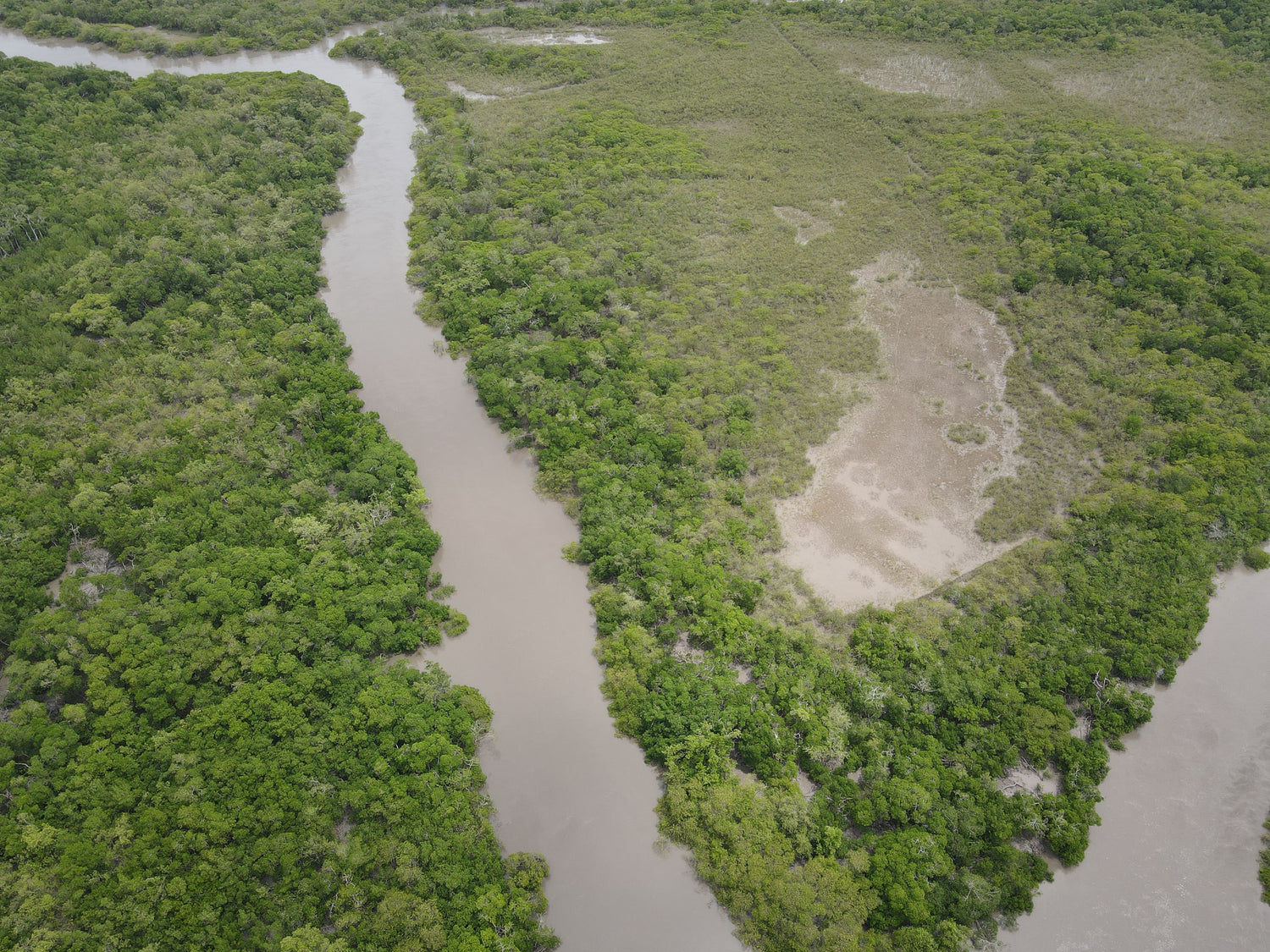
What is Mangrove Restoration?
Mangrove restoration is the process of revitalising and improving mangroves - coastal wetland habitats mainly found in tropical regions with unique trees and plants. Mangroves are crucial ecosystems for a variety of wildlife, stabilising the coastline to prevent the land from erosion and absorbing large quantities of carbon emissions to fight climate change.
The need for mangrove restoration arises due to significant damage and destruction of mangrove areas through urbanisation, aquaculture, and deforestation. Globally, between 20% and 35% of mangrove areas have been lost since 1980. This has resulted in poorer quality of life for coastal populations, lower economic growth and impoverished livelihood. Key aspects of mangrove restoration include replanting mangrove species in areas where they have been depleted or destroyed, restoring local ecosystem dynamics, involving communities in planning and implementation, and implementing protective measures.
Mangrove restoration is essential not only for the preservation of biodiversity and ecological balance but also for the well-being of coastal communities that rely on these ecosystems for their livelihoods. It contributes to the overall health of coastal environments, enhances fisheries, promotes sustainable practices, and mitigates the impact of natural disasters.
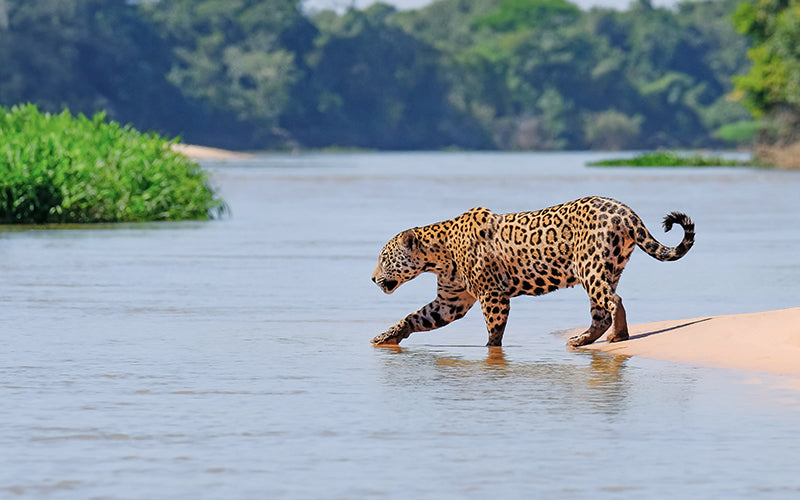
The Importance of Mangrove Restoration in Brazil
The Amazon rainforest is one of the most crucial ecosystems on Earth. It contains 40% of the world’s remaining rainforest, 25% of its terrestrial biodiversity, and more fish species than any other river system.
The Blue Amazon mangrove reforestation site is located in the State of Maranhão, Brazil along the southern border of the Amazon, a region experiencing alarming rates of deforestation due to illegal logging, land conversion for agriculture, and urban expansion. These activities have led to habitat loss, soil degradation, and the displacement of local communities. In many areas, only small, isolated patches of Amazon forest remain. This restoration project aims to reverse these trends by replanting lost mangrove forests, stabilising coastal environments, and preventing further ecological degradation.
Despite Brazil’s economic growth, Maranhão State has the lowest Human Development Index (HDI) score of any state in Brazil, with socio-economic conditions comparable to those of Bangladesh. The local community, primarily reliant on fishing, consists predominantly of Quilombolas—descendants of escaped slaves who now have recognised land rights and maintain their traditional way of life. However, these communities are facing increasing threats to their land and cultural heritage.
Mangrove restoration also helps safeguard several endangered and vulnerable species that rely on these ecosystems. Among the animal species benefiting from this project are the Goliath Giant Grouper (Epinephelus itajara), Manatees (Trichechus spp.), Harpy Eagles (Harpia harpyja), and Jaguars (Panthera onca). These species play an essential role in maintaining the ecological balance of the region.
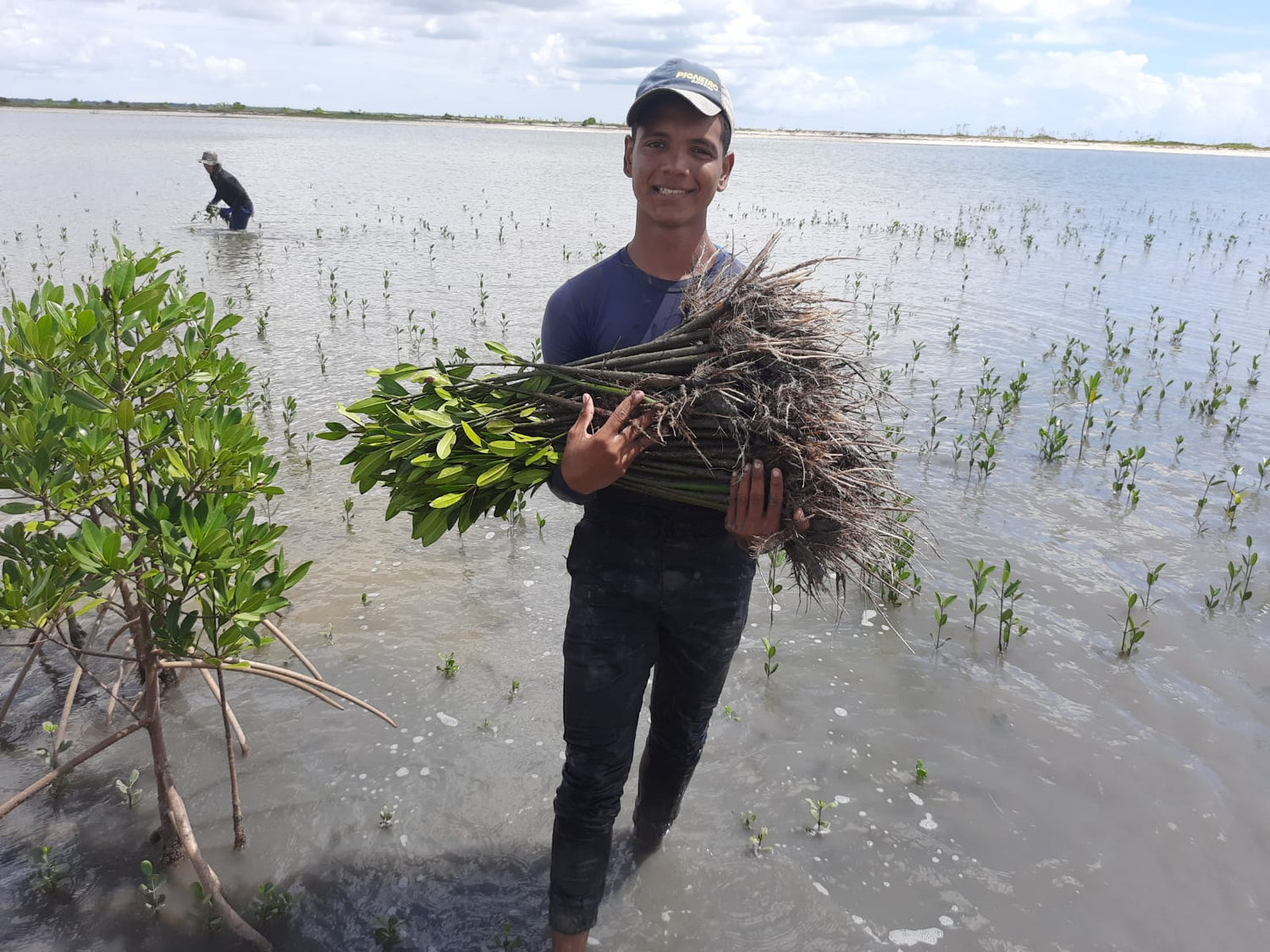
The process of Mangrove Restoration
The two main methods of mangrove planting are nurseries and direct planting. Nurseries nurture seedlings until they are ready for permanent planting in the wild, providing better growth rates and higher survival rates. The nursery process involves filling bags with muddy and clayey soil, germinating seeds, and nursing plants with watering, shading, weeding, pest control, fertilization, and hardening.
The second method is direct planting, where the team pick propagules off existing trees and plant them directly. Both methods are challenging and often require an early start and a late finish. Accessing planting sites can be physically demanding, involving trudging through mangrove channels in hot, knee-deep mud, often barefoot due to the swampy terrain. Planting partners navigate through extensive mangrove roots. At the planting site, approximately 5,000 propagules are planted per hectare, roughly one propagule for every two steps, inserted up to one-third of their length. Planting and protection methods are well planned, resulting in a healthy survival rate of saplings of roughly 80%.
UN Sustainable Development Goals contributed to
The United Nations Sustainable Development Goals (SDGs) are a set of 17 interconnected global objectives aimed at addressing pressing social, economic, and environmental challenges by 2030. They serve as a blueprint for collective action, guiding governments, businesses, and communities worldwide towards a more sustainable and equitable future.
This project contributes to the following goals
Verification
To ensure full transparency and traceability, this project employs cutting-edge monitoring technologies, including geospatial data layers, geotagged photos, drone and satellite imagery. These tools help track progress, confirm reforestation efforts, and provide clear, verifiable evidence of impact.

